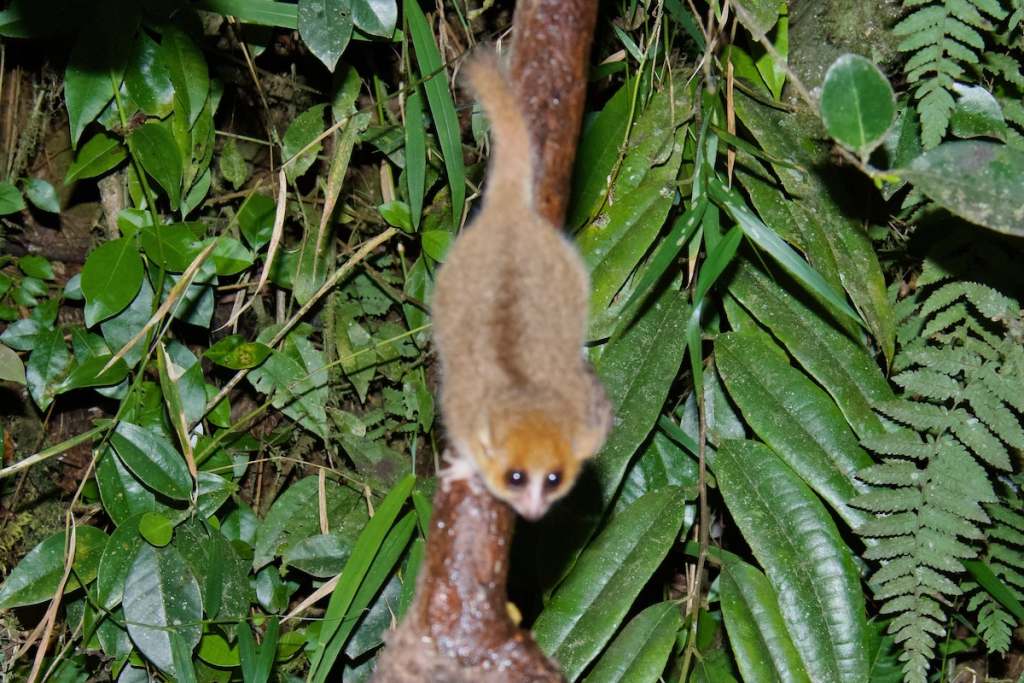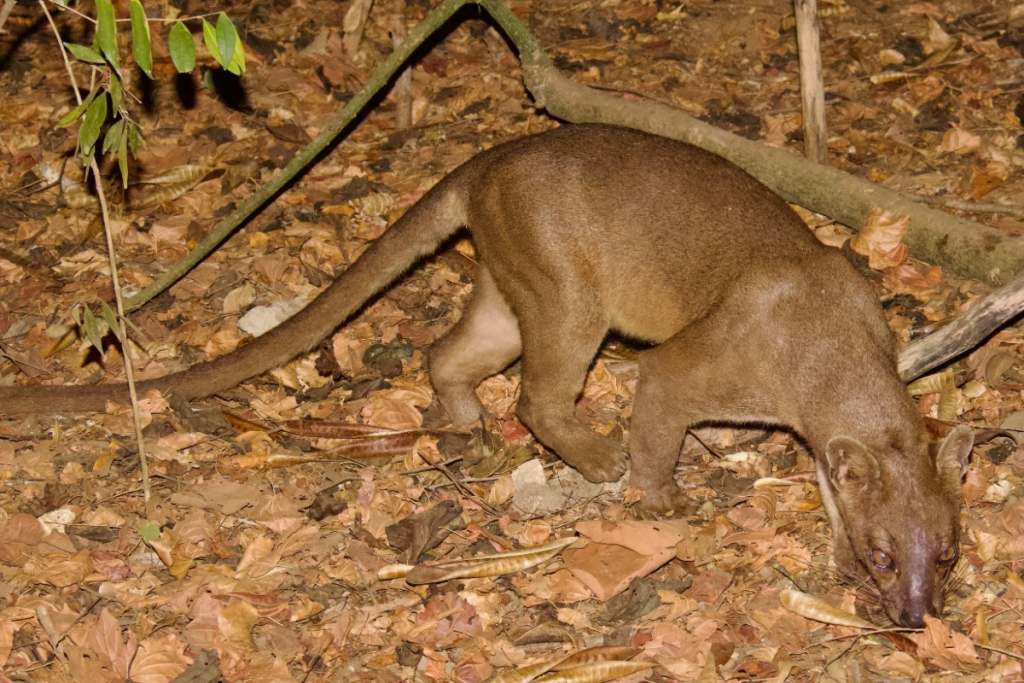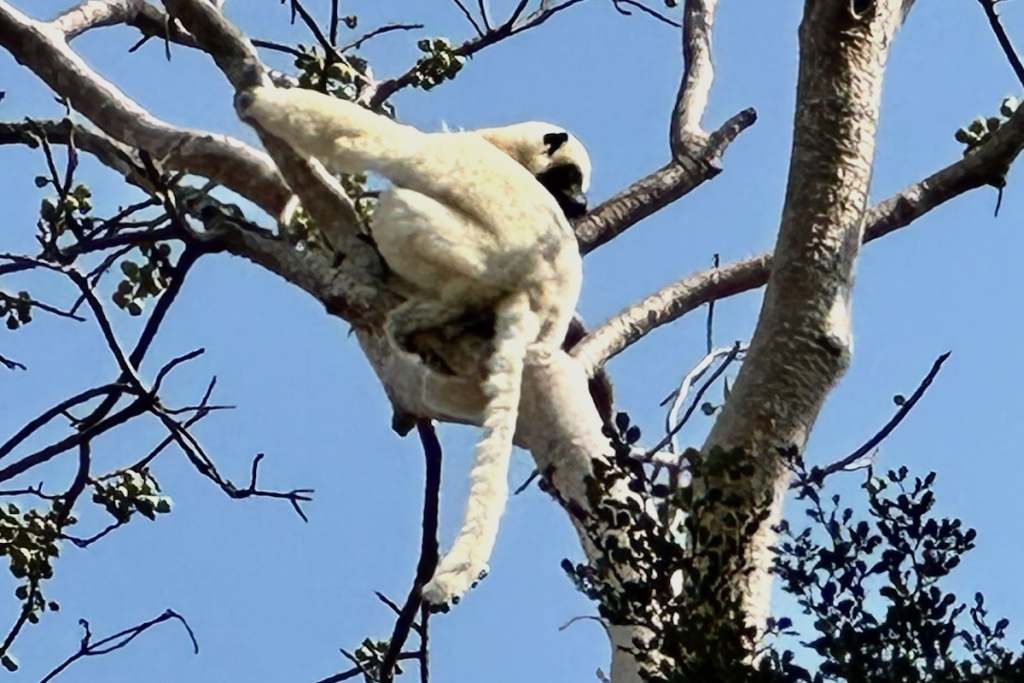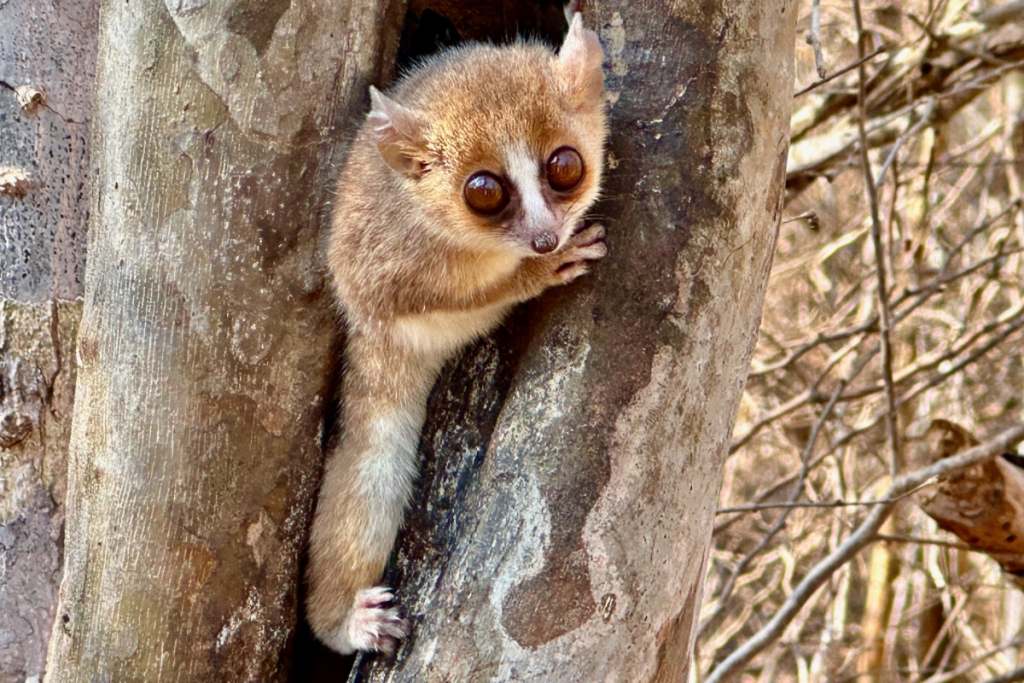Lemurs are unique to the island of Madagascar, an island that became separated from the African mainland when the super continent, Gondwanaland, broke apart. Are there lemurs outside of Madagascar? Lemurs did once inhabit Africa but crossed over to Madagascar before the island broke away from Africa. The result of this separation was isolation from the evolutionary changes that were happening in the rest of the world. In particular, a lack of monkeys. These intelligent primates were responsible for the extinction of lemurs elsewhere in the world. But the lemurs of Madagascar continue to thrive mainly due to a lack of predators.

How Many Types of Lemurs Are There in Madagascar
But the arrival of man on the island heralded the end of their development as it became a fight for survival due to the destruction of their natural habitat and predation by humans. The types of lemurs in Madagascar previously well in excess of 100, was reduced by at least 15 and the largest species just disappeared.
Lemurs are still considered an endangered species as deforestation of the island and poaching of lemurs have continued into the twenty-first century despite poaching being made illegal in 1964. The introduction of national parks and protected forests has provided safe places for lemurs. These include the Kirindy Forest, Tsingy de Bemaraha National Park, Marofandilia Nature Reserve, the Zazamalala Foundation and Ranomafana National Park. It was a privilege to have guided tours of all these areas during a visit to Madagascar.

Kirindy Forest in Madagascar
A private nature reserve, Kirindy Forest, also known as the Kirindy Private Reserve is located in western Madagascar. It is about 50 kilometres from the town of Morondava and lies within the boundaries of the Kirindy Mitea National Park.
A wide variety of animals live in this forest as the well as the lemurs and include the fossa, geckos and chameleons as well as many birds, some unique to this area. The name, Kirindy, means dense forest with wild animals. This forest is home to some species that are unique to this location. My first visit to Kirindy was an evening walk to see the nocturnal lemurs that live there. I was lucky and saw three of them, the grey mouse lemur, the fork marked lemur and the Red-tailed Sportive lemur. The first two just stared down at us through their huge, lustrous eyes. But the third was very active, leaping from tree to tree. I did not need a photograph to remind me of my first sighting of a lemur in the wild. Lemurs only have one natural predator, the fossa, which is not often seen but this evening we saw one scavenging in the kitchens behind the visitor centre. It was a good sighting of this strange animal that bears no resemblance to any other animal I have ever seen, not even the mongoose to which it is related.

Kirindy is home to several different species of diurnal lemurs and walking through the forest the next morning I was treated to some great sightings of the Verraux’s Sifaka lemur and the Red-fronted Brown lemur. Both species were grouped in the trees above me but, whereas the latter remained static, watching our every move, the white sifakas were constantly on the move uttering the strange sounds these animals like to make. Next, I visited the Tsingy de Bemaraha National Park.

Tsingy de Bemaraha National Park in Madagascar
The word Tsingy comes from the local dialect and means “the place where one cannot walk barefoot”. There could be no better name for Tsingy de Bemaraha National Park which encompasses a large area of karst limestone rock formations earning it recognition as a UNESCO World Heritage site. It is also known as the Stone Forest.
Green pockets of trees amongst these sharp-edged expanses of grey rock are home to six species of lemur including some of the rarest species on the island. The excitement of navigating the narrow corridors of rock and climbing to the pinnacles above the deep chasms is spiced by the possibility of encountering a lemur.
On my first walk here, in Little Tsingy I did not see any lemurs. But a second visit, this time to Big Tsingy I was rewarded by a wonderful display of branch hopping by a group of Deckens Sifaka lemurs. Madagascar features a fascinating variety of landscapes and my next foray seeking lemurs was in Marofandilia Forest, a dry pine forest with inland dunes and home to the Marofandilia Private Nature Reserve.

Marofandilia Private Nature Reserve in Madagascar
Akiba Lodge, in the Marofandilia Private Nature Reserve, incorporates a dining area and I had lunch here before setting off to look for lemurs in this small private nature reserve and conservation area.
It was therefore no surprise to encounter a group of the Verreaux’s sifaka feeding from a mound of berries on the ground. The other two species that live here include the nocturnal red-tailed sportive lemur, the smaller pale fork-marked lemur and the smallest mammal in the world, the Madame Berthe mouse lemur. Our guide teased the latter out of its tree home by smearing a treat on the bark. This tiny creature weights just … grams and has eyes almost as large as his head. It did not appear to be disturbed by this rude awakening and we were able to take our time capturing some beautiful images. Another private nature reserve, this time in Zazamalala Forest was my next port of call.

Zazamalala Forest in Madagascar
When blind Simon Rielveld returned to the Morondava area after a 30-year absence he was shocked to find most of the dry forest had been cleared to make way for paddy fields. A few pockets of forest remained and Simon bought one of these areas. He named it Zazamalala (lovely child) and began protecting it from infiltration by the locals. His defence of his land and its wildlife and the planting of thousands of seedlings including rare species endemic to Madagascar has resulted in the stunning forest and beautiful botanic gardens I visited.
It was here I met up two species of lemur I had seen before, the Verraux’s Sifaka lemur and the Red-fronted Brown lemur. This time, good light and close proximity resulted in some good images. Simon’s work has not finished yet as he continues to expand the area he has managed to return to nature and envisages a long green corridor linking isolated nature reserves and providing a sanctuary for the lemurs. My final destination was the Ranomafana National Park.

Ranomafana National Park in Madagascar
Ranomafana National Park covers a large area embracing medium altitude forest covered hills and narrow tributaries of the Namorona River. Our guided walk through the park was also an opportunity to learn more about the Malagasy, inhabitants of Madagascar.
Apart from the wildlife here we also saw a row of memorial stones near the top of a hill. These stones commemorate the people who have been reburied, swathed in a silk cloth, following exhumation. It takes several strong men to carry these huge stones up a hill. I also learned the park was created in 1991, six years after the presence of the famous Golden Bamboo lemur was first recorded in this area.
This species of lemur is in serious danger of becoming extinct and our guide was determined we should see them. This involved the rapid ascent of several flights of steep stone steps only to find they had moved on. But we did seem some other species including the Red-Bellied lemur and the Milne Edward Sifaka.

Our guides persistence paid off when we finally stumbled across a group of Golden Bamboo lemurs. I had worked hard for this rare sight, racing up long flights of steps and then scrambling through dense forest to get a good view. I do a lot of walking but was seriously beginning to doubt I would manage a second walk through the park in the afternoon. But I was determined to give it a try.

We had an easier start to our afternoon walk as we were driven up a hill before entering the park at a different point. The terrain at the start of this second walk was very different and we crossed a large, grassy area before entering the forest. It was a lovely walk on easier terrain as our guide showed us some peculiar insects and told us about the indigenous flora surrounding us.
We only saw on lemur during this visit, the nocturnal Red Tailed Sportiv lemur. It gazed down on us from a hole in the trunk of a tree and could easily have been mistaken for a wise owl. It was a wonderful conclusion to my trip following the lemurs of Madagascar.

If this article has sparked your interest in lemurs they can be seen at several venues in the England including Marwell Zoo the Cotswolds Wildlife Park and the Bristol Zoo Project where you can get up close and maybe even feed these delightful creatures.